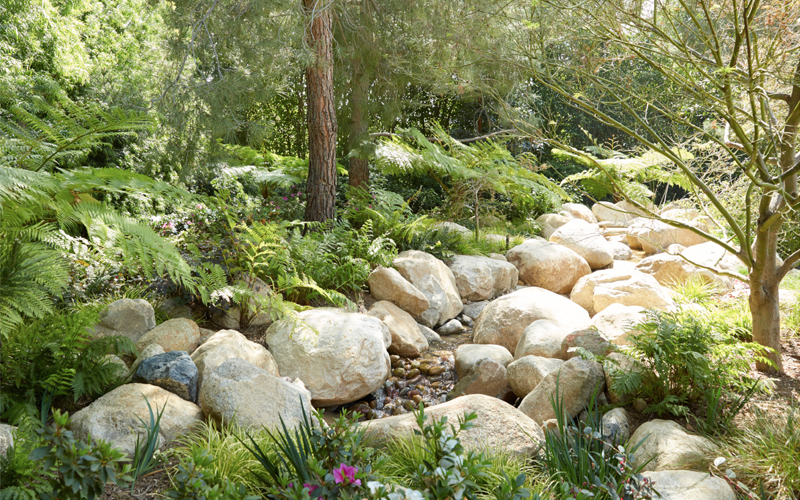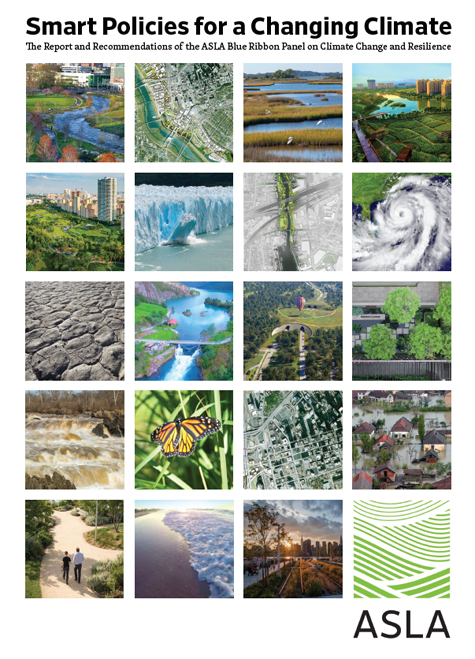Professional Practice
Sustainable Residential Design: Applying Ecological Design
 Over the four-year construction period, the addition of hundreds of mature trees and countless flowering shrubs, perennials, and groundcovers, brought in a flood of nesting birds and insect pollinators. The transformation was evident to workers who had been at the site from start to finish. They went from seeing virtually no wildlife at the beginning to experiencing a cacophony of bird song at dusk and swarms of bees, butterflies, and moths bouncing from plant to plant as they came into bloom. The diverse plantings ensure staggered bloom times to keep pollinators busy year-round, and create niche habitats for many bird and small mammal species. The property is now a lush oasis for urban wildlife in an otherwise biologically monotonous neighborhood. Ë¿¹ÏÊÓƵ 2016 Professional Residential Design Honor Award. Kronish House, Beverly Hills, California / Marmol Radziner
Over the four-year construction period, the addition of hundreds of mature trees and countless flowering shrubs, perennials, and groundcovers, brought in a flood of nesting birds and insect pollinators. The transformation was evident to workers who had been at the site from start to finish. They went from seeing virtually no wildlife at the beginning to experiencing a cacophony of bird song at dusk and swarms of bees, butterflies, and moths bouncing from plant to plant as they came into bloom. The diverse plantings ensure staggered bloom times to keep pollinators busy year-round, and create niche habitats for many bird and small mammal species. The property is now a lush oasis for urban wildlife in an otherwise biologically monotonous neighborhood. Ë¿¹ÏÊÓƵ 2016 Professional Residential Design Honor Award. Kronish House, Beverly Hills, California / Marmol Radziner Plants are central to a functioning global ecosystem. Plants oxygenate the atmosphere and reduce atmospheric pollutants. Ecological restoration in both developed and developing countries is a primary strategy for mitigating the impacts of climate change. Native plant communities are not only key to the global ecosystem, but also crucial to environmental and human health at the residential and neighorhood scales.
In the United States, urbanization has fragmented what were ecologically-productive landscapes. According to the Audubon Society, the continental U.S. has lost of wildlife habitat and farmland to urban sprawl over the last century. Sustainable residential landscape architecture practices can help build a network of productive landscapes. Native plants can be used to regenerate sustainable plant communities and reconnect fragmented ecosystems in residential areas. Creating a network of productive ecosystems expands wildlife habitat areas and boosts human health and well-being by bringing nature's benefits right to residential yards and outdoor spaces.
Homeowners who use native plants reduce the use of excess water, energy, and chemical fertilizers and pesticides that damage natural ecosystems as well as support pollinators.
Residential landscapes can also be used to grow food at home and in communities. When growing food, gardeners should apply principles of ecological design and permacultural practices to ensure food production and garden systems are integrated with the natural environment and avoid contaminating local watersheds with runoff. Homeowners and communities can create composting systems for efficient waste removal and to increase organic matter in the soil.
And plants can also be used inside the home to improve air quality and human productivity.
Homeowners should be mindful of the quality of the soil on their property. Healthy soils are essential to plant and tree health and enable the infiltration of stormwater into the ground. Years of development and construction can lead to layers of compacted soil that restrict movement of water and air, and limit root growth. Homeowners can achieve credit from by using techniques like to help rebuild ecosystem function.
Landscape architects partner with communities, non-profit organizations, and local governments to increase public awareness about using sustainable residential design practices that yield productive plant systems and reduce the negative ecological impacts of typical residential development.
Native Plants
Ecological Gardens and Permaculture
Supporting Pollinators
Indoor Plants
Residential Composting
This guide was written by Dana Davidsen and Jared Green.
Climate Change Resources:
Download Report:
Sustainable Planning and Design Guides:
Sustainable Residential Design Resource Guides:
Health and Well-Being:
Organizations
, Australia
Research
¡°,¡± Heather L. Venhaus and Herbert Dreiseitl, Wiley, 2012
¡°,¡± Ian L. McHarg, Wiley, 1995
¡°,¡± Sarah Taylor Lovell and Douglas M. Johnson, Resilience Alliance, 2009
¡°,¡± Richard Hartlage and Sandy Fischer, The Monacelli Press, 2015
"," James Urban, ISA, 2008
¡°,¡± Larry Weaner and Thomas Christopher, Timber Press, 2016
¡°,¡± Noel Kingsbury and Piet Oudolf, Timber Press, 2013
¡°,¡± John Greenlee and Saxon Holt, Timber Press, 2009
"," Douglas W. Tallamy. Timber Press, 2009
"," Native Plant Conservation Campaign
"," Scott and Lauren Springer Odgen. Timber Press, 2008
"," Rene Kane, SPROUT, October 2004
Resources
Designing Neighborhoods for People and Wildlife, American Society of Landscape Architects
, UN Food and Agricultural Organization (FAO)
Designing Neighborhoods for People and Wildlife, American Society of Landscape Architects
, U.S. Green Building Council
, Land8
, The Nature Conservancy
Government Resources
, City of Santa Monica
, Texas A&M Agrilife Extension
, Natural Resources Conservation Service, U.S. Department of Agriculture
, Environmental Protection Agency
, Bureau of Land Management, Interior Department
, U.S. Department of Agriculture
Projects
DBX Ranch, Pitkin County, Colorado
Design Workshop, Inc.
The Restoring of a Montane Landscape, Rocky Mountains, Colorado
Design Workshop Inc.
Kronish House, Beverly Hills, California
Marmol Radziner
Le Petit Chalet, Southwest Harbor, Maine
Matthew Cunningham Landscape Design LLC
Recovered Modernism: A Landscape Matrix Enriches a Dallas Hacienda, Dallas Texas
Reed Hilderbrand LLC
, East Hampton, New York
Edmund Hollander Landscape Architect Design, P.C, New York, New York
Farrar Pond Residence, Lincoln, Massachusetts
Mikyoung Kim Design, Brookline, Massachusetts
Garden/garden, Santa Monica, California
Jettscapes Landscapes
High Point, Seattle, Washington
Mithun
Maple Hill Residence, Westwood, Massachusetts
Stephen Stim son Associates
, Paradise Valley, Arizona
Steve Martino & Associates, Phoenix, Arizona
If you know of useful resources we've missed, please send your recommendations to: info@asla.org